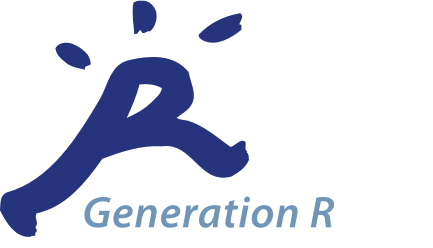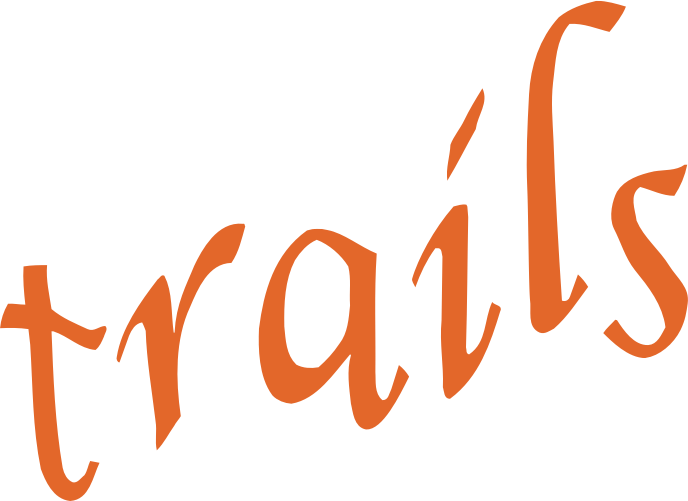-
measure Columbia Card Task (CCT)
Study: Generation R Mode of collection: MeasurementsAndTests Behavioral/cognitive task Available measurements: Main Cohort 9-10 yearsThe Columbia Card Task (CCT) is a psychological test that measures cognitive functions related to executive functioning, such as planning, set shifting, decision-making, and inhibitory control. During the CCT, participants are presented with a deck of cards and are required to sort the cards based on different categories, with the rules for sorting...Created May 3, 2023 • Updated May 3, 2023 -
measure Nonword repetition task (NWR) - shortened
Study: Generation R Mode of collection: MeasurementsAndTests Behavioral/cognitive task Available measurements: Main Cohort 9-10 yearsA simplified version of the Dutch nonword repetition task (NWR; Rispens & Baker, 2012). The NWR was shortened and scoring was transformed to correct/incorrect nonwords, resulting in the shortened NWR (NWR-S).Created May 3, 2023 • Updated May 3, 2023 -
measure Short Obsessive Compulsive Disorder Screener (SOCS)
Study: Generation R Mode of collection: SelfAdministeredQuestionnaire Available measurements: Main Cohort 8 years 9-10 years 13-14 years Covid questionnaires 17-18 yearsObsessive compulsive symptoms were assessed using the Short OCD Screener (SOCS) at multiple times via the main caregiver- and child-report. The SOCS is a 7-item scale questionnaire measuring compulsive behaviors including checking, repetition, and ability to stop behaviors, assessed on a 3-point Likert scale.Created May 3, 2023 • Updated May 3, 2023 -
measure CITO score
Study: NTR Mode of collection: MeasurementsAndTests Behavioral/cognitive task Available measurements: Young Netherlands Twin Register YS_TRF5 YS_TRF7 YS_TRF10 YS_12 YS_TRF12 YS_DHBQP YS_DHBQ14 YS_DHBQ16 YS_DHBQ18 YC_BS1 YC_BS2 YE_ATTEF2 YS_CITO YS_DT YS_TRIP12The CITO-test is a standardized test for educational achievement that is administered in the final grade (when children are 11 or 12 years old) of elementary school. The CITO-test consists of multiple choice items in 4 different educational skills, namely Arithmetic, Language, Study Skills, and Science and Social Studies. All scores on the scales are...Created March 28, 2023 • Updated April 4, 2023 -
measure Peabody Picture Vocabulary Task (PPVT)
Study: YOUth Mode of collection: MeasurementsAndTests Behavioral/cognitive task Available measurements: Baby and Child 3 years 6 years
Child and Adolescent 9 years 12 yearsThe Peabody-Picture vocabulary task (PPVT (Dunn and Dunn, 1981); for Dutch, the PPVT-III-NL (Dunn and Dunn, 2005)) is a widely used computer task to evaluate a participant’s vocabulary size for his or her age, and serves as a proxy of general language performance. It is normed for participants up to 90 years of age. Participants see on each trial an array...Created March 28, 2023 • Updated March 30, 2023 -
measure Child Gap Prosaccade
Study: YOUth Mode of collection: MeasurementsAndTests Eyetracking Available measurements: Child and Adolescent 9 years 12 yearsThe Gap-overlap task is a gaze contingent paradigm that measures visual attention shifting between a central and a peripheral stimulus. This is thought to be a key sub process underlying behavioral control. The Gap-verlap task contains three conditions; i) Gap, in which the central stimulus disappears 200ms before the appearance of the peripheral target;...Created March 28, 2023 • Updated March 30, 2023 -
measure The Balloon Analogue Risk Task (BART)
Study: YOUth Mode of collection: MeasurementsAndTests Behavioral/cognitive task Available measurements: Child and Adolescent 12 yearsThe Balloon Analogue Risk Task (BART) is a computerized measure of risk-taking behavior. The BART models real-world risk behavior through the concept balancing the potential for reward versus loss. In the task, the participant is presented with a balloon and offered the chance to earn money by pumping the balloon. Each click causes the balloon to...Created March 28, 2023 • Updated March 30, 2023 -
measure Resting state experiment (rsMRI)
Study: YOUth Mode of collection: MeasurementsAndTests MRI Available measurements: Baby and Child 0 months
Child and Adolescent 9 years 12 yearsFunctional MRI acquired while subjects were in rest.Created March 28, 2023 • Updated March 30, 2023 -
measure Clinical Evaluation of Language Fundamentals (CELF) - Pragmatics
Study: YOUth Mode of collection: SelfAdministeredQuestionnaire Available measurements: Baby and Child 3 years 6 years
Child and Adolescent 9 years 12 yearsThe Clinical Evaluation of Language Fundamentals (CELF) was designed to assess general language ability and specific language domains, and screen for language disorders in children and youth between 5 and 18 years. The Preschool version is meant for toddlers between 3 and 6 years old. The CELF consists of many subscales, such as Concepts and Following...Created March 28, 2023 • Updated March 30, 2023 -
measure Gaze Cueing experiment
Study: YOUth Mode of collection: MeasurementsAndTests Eyetracking Available measurements: Baby and Child 5 months 10 months 3 years 6 years
Child and Adolescent 9 years 12 yearsThe social gaze task is an eye-tracking task that measures a subject's sensitivity to another person's gaze direction as a possible cue to predict the location of a next event. Sensitivity to gaze direction is taken as a marker of social competence. In a trial, children see a face with direct gaze, followed by an eye gaze shift to one side, followed by a...Created March 28, 2023 • Updated March 30, 2023 -
measure Functional MRI Inhibition experiment scan
Study: YOUth Mode of collection: MeasurementsAndTests MRI Available measurements: Child and Adolescent 9 years 12 yearsFunctional MRI acquired while subjects performed a task. The task aims to measure performance and brain activation during actual stopping as well as during the anticipation of stopping. Trials begin with the presentation of a cue (0, * or *), representing the stop-signal probability (0, 22 and 33% respectively). Permanently visible are three horizontal...Created March 28, 2023 • Updated March 30, 2023 -
measure Delay Discounting - hypothetical
Study: YOUth Mode of collection: MeasurementsAndTests Behavioral/cognitive task Available measurements: Child and Adolescent 9 years 12 yearsThe Delay Discounting task is the most widely used paradigm to measure the capacity to wait for a hypothetical monetary reward in children between 8-18 years old. A child is given a series of option between a variable immediate monetary reward and 10 Euros after a certain delay. The delay of the 10 Euro reward varies between 2, 30, 180, or 365 days. Each...Created March 28, 2023 • Updated March 30, 2023 -
measure Functional MRI Inhibition experiment behavior
Study: YOUth Mode of collection: MeasurementsAndTests Behavioral/cognitive task Available measurements: Child and Adolescent 9 years 12 yearsBehavioral output file accompanying the functional MRI acquired while subjects performed a task. The task aims to measure performance and brain activation during actual stopping as well as during the anticipation of stopping. Trials begin with the presentation of a cue (0, * or **), representing the stop-signal probability (0, 22 and 33% respectively)....Created March 28, 2023 • Updated March 30, 2023 -
measure Child Gap Antisaccade
Study: YOUth Mode of collection: MeasurementsAndTests Eyetracking Available measurements: Baby and Child 6 years
Child and Adolescent 9 years 12 yearsThe Gap-overlap task is a gaze contingent paradigm that measures visual attention shifting between a central and a peripheral stimulus. This is thought to be a key sub process underlying behavioral control. The Gap-overlap task contains three conditions; i) Gap, in which the central stimulus disappears 200ms before the appearance of the peripheral target;...Created March 28, 2023 • Updated March 30, 2023 -
measure Functional MRI Emotion experiment behavior
Study: YOUth Mode of collection: MeasurementsAndTests Behavioral/cognitive task Available measurements: Child and Adolescent 9 years 12 yearsBehavioral output file accompanying the functional MRI acquired while subjects performed a task. Participants viewed pictures of faces (happy, fearful, or neutral expression) and houses in a pseudorandom order. The stimuli are taken from the Radboud Faces Database (Langner et al., 2010). Stimuli were presented in blocks of 18 seconds, with four blocks for...Created March 28, 2023 • Updated March 30, 2023 -
measure Penn Computerized Neurocognitive Battery (Penn CNB)
Study: YOUth Mode of collection: MeasurementsAndTests Behavioral/cognitive task Available measurements: Child and Adolescent 9 years 12 yearsThe Penn Computerized Neurocognitive Battery (Penn CNB) is a Dutch translation of the web-based computerized neurocognitive battery developed by the Brain Behavior Laboratory of the University of Pennsylvania (https://penncnp.med.upenn.edu/). It includes a total of 17 tests, resulting in measures of performance accuracy (the percentage or number of...Created March 28, 2023 • Updated March 30, 2023 -
measure Inhibition experiment (mock scanner)
Study: YOUth Mode of collection: MeasurementsAndTests Behavioral/cognitive task Available measurements: Child and Adolescent 9 years 12 yearsBehavioral output file of the inhibition experiment practice run preceding the Functional MRI Inhibition experiment.Created March 28, 2023 • Updated March 30, 2023 -
measure Functional MRI Emotion experiment scan
Study: YOUth Mode of collection: MeasurementsAndTests MRI Available measurements: Child and Adolescent 9 years 12 yearsFunctional MRI acquired while subjects performed a task. Participants viewed pictures of faces (happy, fearful, or neutral expression) and houses in a pseudorandom order. The stimuli are taken from the Radboud Faces Database (Langner et al., 2010). Stimuli were presented in blocks of 18 seconds, with four blocks for each of the four stimulus types. The...Created March 28, 2023 • Updated March 30, 2023 -
measure Wechsler Intelligence Scale for Children (WISC)
Study: YOUth Mode of collection: MeasurementsAndTests Behavioral/cognitive task Available measurements: Child and Adolescent 9 years 12 yearsThe Wechsler Intelligence Scale for Children (WISC) is an IQ test for children of 6-17 years of age to determine general intelligence. It generates a full scale IQ (formerly known as an intelligence quotient or IQ score) that represents a child's general intellectual ability. The most common primary index scores are the Verbal Comprehension Index, the...Created March 28, 2023 • Updated March 30, 2023 -
measure Wechsler Intelligence Scale for Children (WISC)
Study: TRAILS Mode of collection: MeasurementsAndTests Behavioral/cognitive task Available measurements: Population cohort T1
Clinical cohort T1The Wechsler Intelligence Scale for Children (WISC) is an IQ test for children of 6-17 years of age to determine general intelligence. It generates a full scale IQ (formerly known as an intelligence quotient or IQ score) that represents a child's general intellectual ability. The most common primary index scores are the Verbal Comprehension Index, the...Created March 28, 2023 • Updated March 28, 2023




